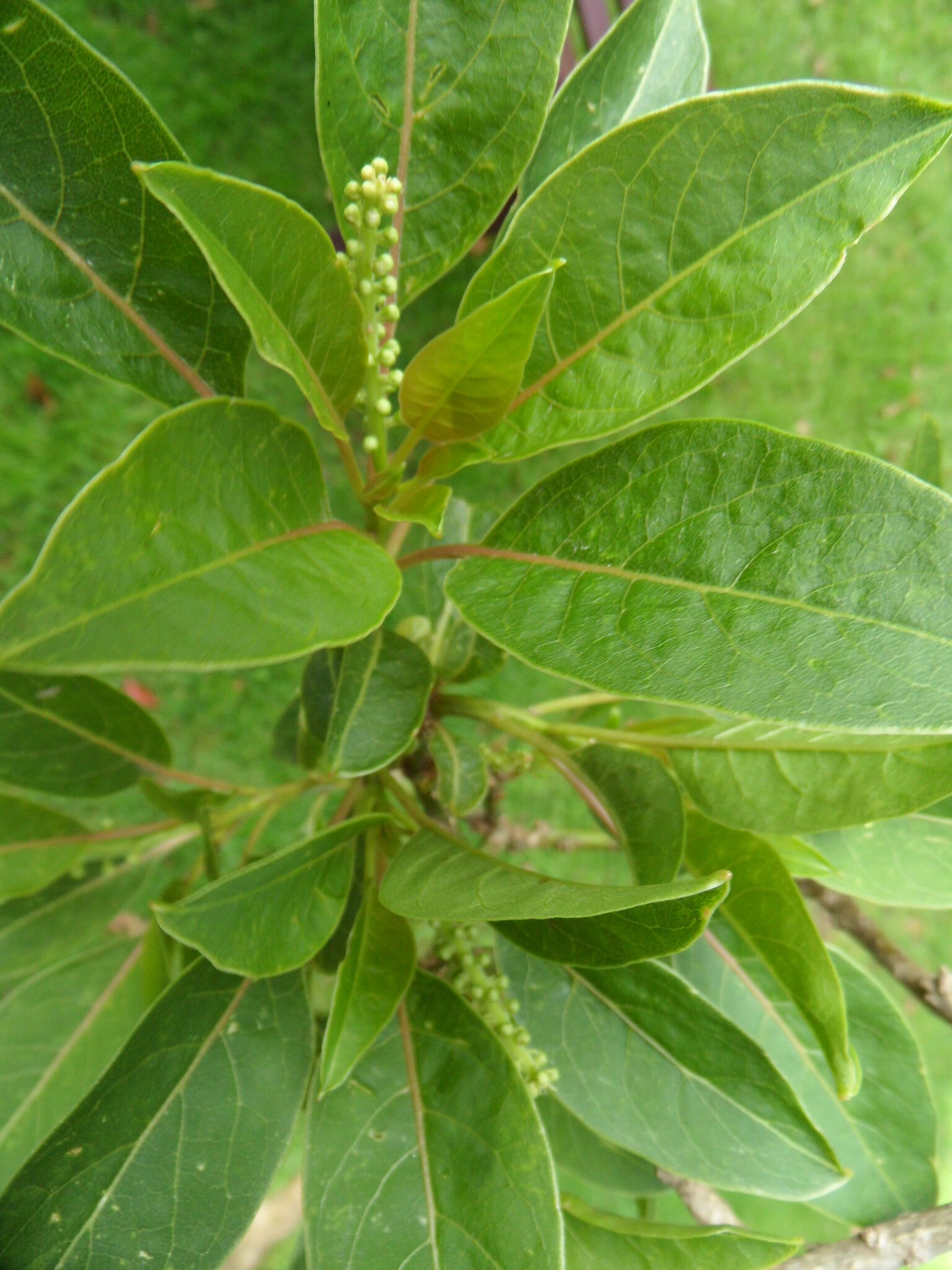
Fast-growing evergreen tree to about 10 m tall with a widespreading canopy. Trunk broad, expanding and often buttress-like at the base. Leaves elliptic to ovate, mostly 5-10 cm long, midrib prominent. Flowers uni-sexual, white, hanging in clusters that are mostly 10-15 cm long; individual flower stalks 3-4 mm long. Stamens 20-30; styles 7-10; spring to summer. Female flowers with rudimentary stamens, males with aborted carpels. Fruits black, fleshy.
South America
Ombu is the local South American common name meaning shade, as its widespreading canopy provides welcome protection.
A popular tree of the 19th century planted in the warmer parts of NSW and occasionally in Victoria. Victoria's Geelong Advertiser (17 May 1872) referred to a specimen in the Geelong Frogmore Nursery as 'Dr Mueller's great shade tree': specimens sometimes persist around old farmyards and homesteads. Possibly Australia's finest specimen, over 100 years old, is at the old penal settlement on St Helena Island, Queensland with a vast buttressed trunk about 30 m in circumference at the base.
An unusual soft-wooded tree with a broad buttress-like base and white flowers in pendent clusters.
SA: Reynella (in front of homestead garden of Hardys Reynella Winery, Reynella Rd); Prospect ('Mitchell House', 18 Fitzroy Terrace; Novar Gardens (Cummins Historical House, Sheoke Ave). NSW: Sydney (Royal Botanic Garden Sydney). VIC: Benalla (Arundel Street North, 11.5 m tall with a spread of 16 m and girth of 11 m at 0.5 m in 1988); Eaglehawk (Police Station); Colac ('Yeowarra', Princes Hwy 7 km E of Colac, settled by Austin family in 1873); Hawthorn (Scotch College, old specimen); Kerang (next to Kangaroo Lake); Koroit (Commercial Road); Milawa (Caravan Park by barbeque); Parkville (Melbourne University, S of Babel).
Source: (1997). Phytolaccaceae. In: . Horticultural Flora of South-eastern Australia. Volume 2. Flowering plants. Dicotyledons. Part 1. The identification of garden and cultivated plants. University of New South Wales Press.
